It is well known that the official definition of poverty, based on a formula developed in the early 1960s, undercounts the number of people struggling to make ends meet.
But even under this inadequate definition, poverty engulfs too many Oregonians and is getting worse.
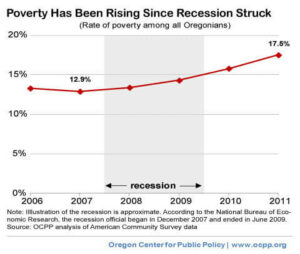
Since the start of the recession, Oregon’s poverty rate has risen every year.
In 2007, the year prior to the recession, 12.9 percent of Oregonians lived below the poverty line. By 2011, the poverty rate reached 17.5 percent.
During that period, nearly 190,000 more Oregonians fell below the poverty line. That is like adding a city with a population larger than Salem to the ranks of the poor.
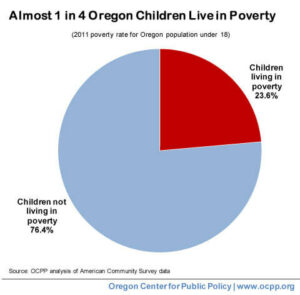
In 2011, nearly one in four Oregon children (23.6 percent) lived in poverty.
In 2007, prior to the start of the recession, Oregon’s child poverty rate (16.9 percent) trailed the national average. Starting in 2008 and continuing through 2011, Oregon’s child poverty rate has been no different than the national average.
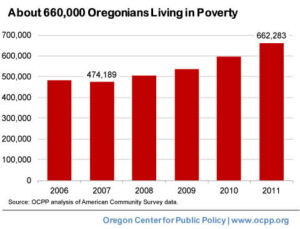
In 2011, about 660,000 Oregonians lived below the federal poverty threshold.
To put that total in perspective, the number of officially poor Oregonians is more than twice the population of Oregon’s second and third largest cities, Eugene and Salem, combined (313,186). If poverty were a city in Oregon, it would be the state’s second biggest city.
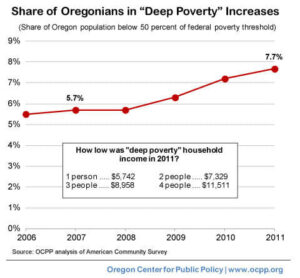
“Deep poverty” — households with income at less than half of the federal poverty threshold — is also on the rise. In 2007, 5.7 percent of Oregonians lived in deep poverty. By 2011, that share had grown to 7.7 percent.
How deep is deep poverty? A family of three would have had to earn less than $8,958 in 2011 to meet the definition of living in deep poverty.
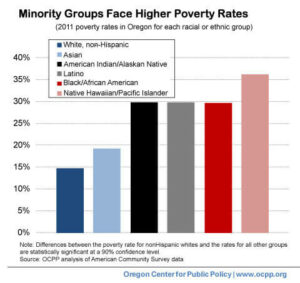
As bad as poverty is for Oregon as a whole, it’s worse for Oregonians of color. In 2011, the poverty rate for non-Hispanic whites in Oregon was 14.8 percent. By contrast, it was 19.2 percent for Asians, 29.8 percent for Native Americans, 29.8 percent for Latinos, 29.7 percent for African Americans and 36.2 percent for Native Hawaiian/ Pacific Islanders.








